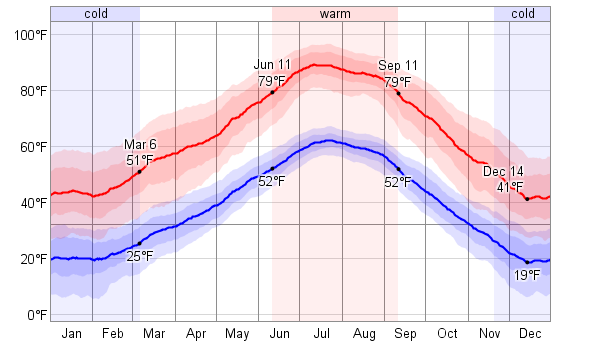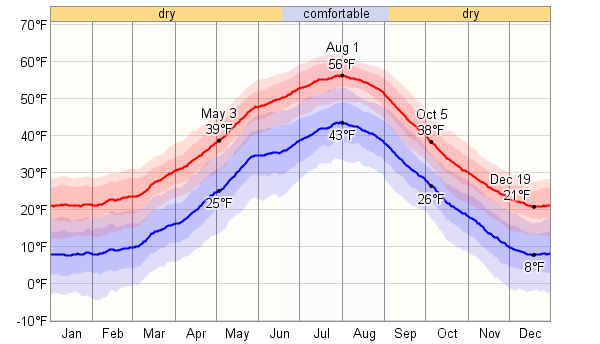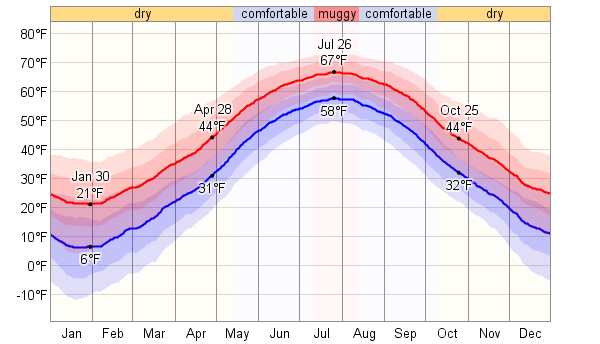Not here. Denver is a semi-arid ( semi-desert ) climate. We've actually had the house so well sealed that they advise against sealing it more ( gotta have some fresh air ). We had an energy evaluation with an IR camera. They sealed and insulated the crawl space walls, sealed the crawl space vents, and sealed the entire main floor as much as they dared, they said. Our energy bills went down by about 1/3 after that.
That's actually
bad advice. Random air leaks are not a great source of fresh air, since there is no way to guarantee the cleanliness of the path it takes, or where the ventilation is actually needed. Current code max air leakage of 3ACH/50 almost always requires mechanical ventilation, and with known paths and quantities it doesn't have to be anywhere near ASHRAE 62.2 ventilation rate 24/7 to have superb quality air. Keeping the house as leaky as it is saved the up front cost of mechanical ventilation systems, but imposes the cost of humidification & controls.
There are numerous existence proofs in the Front Range of tight houses with mechanical ventilation that don't need humidification systems to stay above 30% RH in winter.
Haven't heard of that. We have gas forced air heating, and I think it just ventilates the flame so it gets enough oxygen to burn,
We don't like static, and it kills electronics. So
we've found that the ideal humidity is about 47% and it prevents static. We never keep the heat over 65 in winter - 60 at night ( good sleepin'!) and we like the AC set no higher than 68 in the summer, because otherwise we have problems sleeping. We're cool weather folks.

The ventilation intake on hot air furnaces is often in the form of make-up air duct to the outdoors tied into the system's return air ducting, usually 5-10' before the tie-in to the furnace. It may or may not have a vane/valve on it for adjusting it. Sometimes it's more sophisticated than that. That is to be distiguished from the ducted combustion air intakes on direct-vented sealed combustion condensing furnaces. Yours may or may not have any connection between the return ducts and the outdoors to worry about.
Even 30% RH is enough to prevent static- how are you measuring the RH?
A body of air that is 47%RH @ 65F has a dew point of 44F, about the same as air that is 40% RH @ 70F. That's at the very high end of where you want to be in terms of keeping the springtime mold-spore counts indoors under control. If you knocked it back to 40% RH@ 65F you'd have a dew point of 40F, which is quite a bit better for the house, based on your wintertime outdoor temperature averages.
Jeez, without the humidifier, it plays havoc on our sinuses and skin. Cracked fingers, dried sinuses and infections. Have to think about that. And computers and other electronics are trashed by static.
Again, air that dry is a symptom of over-ventilation.
All too often unbalanced or poorly implemented duct system designs, or leaking ducts create room-to-room and room-to-outdoors pressure differences, that drives air infiltration (the "great outdoors" is part of the pressure equalizing path in a leaky house), with air leakage an order of magnitude or more higher than what the calculated natural air exchange rates would be based on the blower door numbers.
Does every room with a supply register have an associated return located where it isn't restricted by a door? Every supply duct needs an appropriately sized return path to avoid excessive pressure differentials.
Are the ducts all inside conditioned space (rather than above the insulation in an attic)? Leaks in ducts that are outside the pressure boundary of the house create super-high air-handler driven air infiltration.
Are all duct joints & seams sealed with duct mastic?
Are all register boots caulked to the subfloor or ceiling/wall gypsum, to guarantee that all of the air is going to/coming from where it was designed to be, rather than through wall/ceiling/floor assemblies?
Are the air handler seams all taped with foil tape?
What were the actual ACH/50 numbers (or cfm/50) numbers when they did the blower door test?



